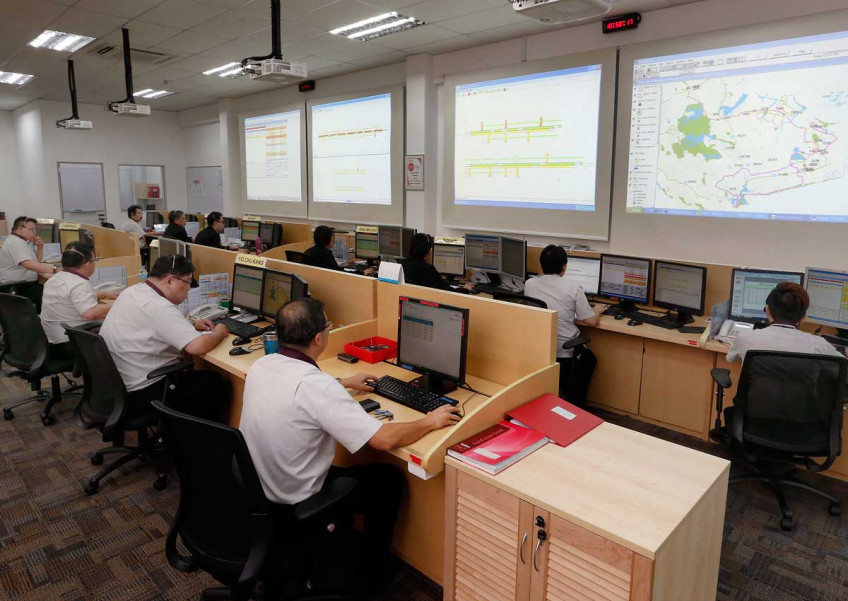More bus controllers for smoother service

The time one spends waiting for a bus depends in part on the likes of Mr Eng Boon Hou, although he is not behind the steering wheel.
He is "parked" at a workstation instead, where he "drives" buses by monitoring their movements on three computer monitors.
Mr Eng, 26, is a bus service controller at SMRT's operations control centre in Woodlands. He regulates the speeds of buses plying the roads, and ensures that they reach their stops on schedule.
Through his computer screen, he tracks the progress of SMRT services and keeps in close contact with bus captains, asking them to slow down or stop briefly at bus stops, so that buses on the same route do not bunch up.
Bus controllers such as Mr Eng play a crucial role in maintaining bus "headways", or intervals, so that commuters experience more regular waiting times.
With all bus services here having to meet stricter service requirements in the second half of this year, bus operators SMRT and SBS Transit have been beefing up their numbers.
SBS Transit, which has a fleet of more than 3,000 buses and close to 260 bus services, currently has 70 service controllers.
Mr Johnson Lim, SBS vice-president of the operations control centre, said there has been a 25 per cent increase since 2013, and he expects the figure to hit about a hundred in the next two years.
A bigger team means that each controller looks after fewer services, he said. From a ratio of one controller to 15 services three years ago, it is now 1:10, and the goal is to cut this to 1:6.
SMRT, which runs 100 services and 1,400 buses, has 25 bus controllers, but plans to grow this to 60 in the next few years. The controllers each manage between seven and nine trunk services or 10 to 12 feeder routes.
Bus controllers employ a range of strategies, said Mr Eng.
"Before two buses bunch up, we will ask the bus behind to keep a distance... If the gap is too wide between buses, we can try to inject another one to cover up."
He said bus controllers have to multitask and respond to situations on the fly.
Giving an example, he said: "During long weekends, there are jams near the Woodlands Causeway and it affects the Woodlands Town side. We divert buses away from the train checkpoint, and staff on the ground inform commuters to move to another bus stop nearby."
While their main task is to manage intervals, service controllers also help if an assault or molestation case happens on a bus, for instance, or when a passenger is ill.
SBS' Mr Lim said the controllers are an "extra pair of hands", as they can help to liaise with the police or emergency services and pinpoint the exact location of the bus.
Earlier this year, a mother and daughter were separated when the child boarded the bus without the mother's knowledge.
SBS service controller Fong See Meng, 40, worked with the bus captain to get another passenger to look after the child until the bus reached the interchange. The mother took the next bus and was reunited with her daughter.
"If we did not help, the mother would have been so frantic. It was a good reunion," said Ms Fong.
adrianl@sph.com.sg

This article was first published on March 28, 2016.
Get a copy of The Straits Times or go to straitstimes.com for more stories.